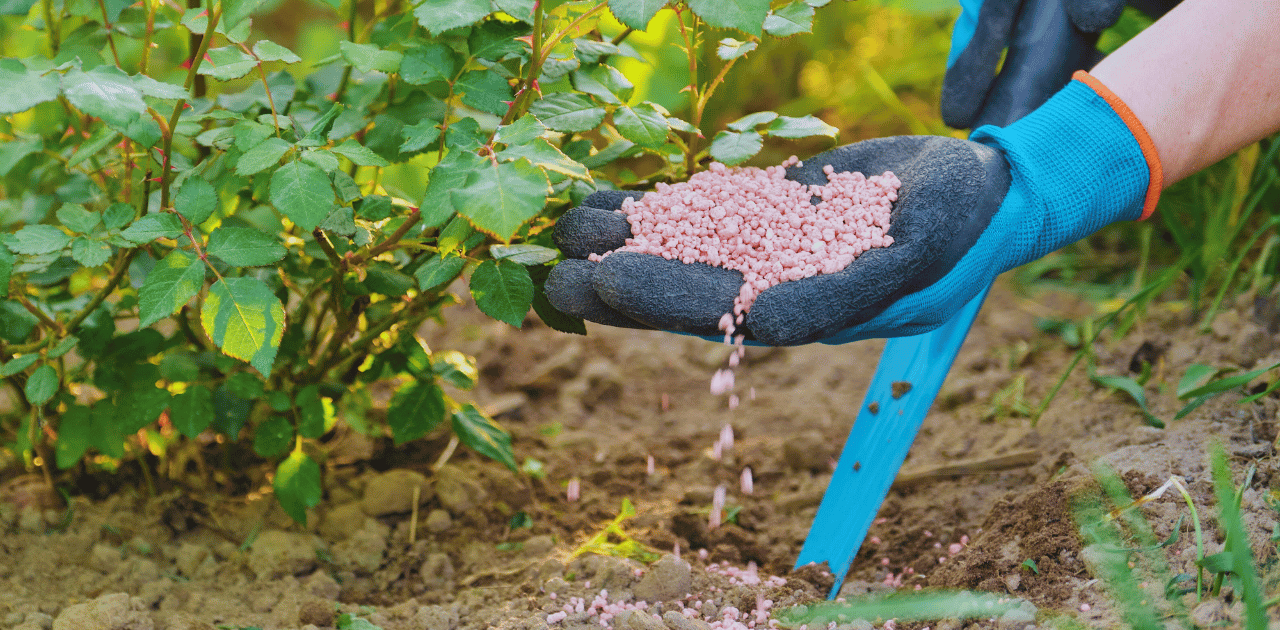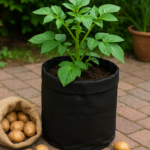For your plants to thrive and your garden to flourish, Phosphorus is an essential nutrient that plays a critical role in various plant functions. From energy transfer to root development and flowering, Phosphorus is vital to healthy, robust plants. However, many gardeners need help with phosphorus deficiency in their soil, leading to stunted growth and poor yields. In this guide, we’ll explore practical and effective methods to increase phosphorus levels in your soil. Whether you prefer organic or inorganic options, understanding how to appropriately amend your soil will ensure a bountiful, vibrant garden. Get ready to transform your garden into a thriving oasis!
What Soil Phosphorus?

Phosphorus is a crucial nutrient for plant growth and plays a significant role in several vital plant functions. It’s integral to forming DNA, RNA, and ATP, which are essential for plant energy transfer and genetic material. Phosphorus promotes root development, enhances flowering and fruiting, and contributes to plant vigour.
However, Phosphorus is often not readily available in the soil. It tends to bind with other elements, making it inaccessible to plants. This is why understanding soil phosphorus levels is vital for gardeners. Testing your soil’s phosphorus content can help identify deficiencies and guide your fertilization efforts.
Plants showing phosphorus deficiency often exhibit stunted growth, dark green or purplish leaves, and poor flower and fruit production. Recognizing these symptoms and taking corrective measures can significantly improve your garden’s health and productivity. By understanding soil phosphorus and its role in plant health, you can ensure your plants get the nutrients they need to thrive.
Read to know more: How to Store Potting Soil? Tips and Tricks
Importance of Phosphorus in Soil

Phosphorus is a vital nutrient in soil that is crucial for supporting plant growth and overall ecosystem health. Understanding its significance helps gardeners, farmers, and environmentalists ensure optimal soil conditions.
- Energy Transfer and Storage: Phosphorus is a crucial component of ATP (adenosine triphosphate), essential for storing and transferring energy within plants. This process supports various physiological functions, such as nutrient uptake, root development, and growth.
- Root Development: Adequate Phosphorus in the soil encourages healthy root growth, allowing plants to absorb water and nutrients more efficiently. Strong roots contribute to the overall stability and health of the plant.
- Flower and Fruit Production: Phosphorus forms flowers and fruits, enhancing reproductive success and yield. It influences the quality and quantity of flowers and fruits produced.
- Structural Component: Phosphorus is a part of the cell membrane structure, helping regulate nutrient and water flow in and out of plant cells.
- Environmental Impact: In a broader ecological sense, Phosphorus contributes to the stability of ecosystems by promoting the growth of beneficial plant communities, supporting wildlife, and maintaining soil health.
Role of Phosphorus in Plant Growth
Phosphorus is essential for plant growth, playing several crucial roles:
- Energy Transfer and Storage: Phosphorus is a vital component of ATP (adenosine triphosphate), the molecule responsible for storing and transferring energy within plants. This process supports various metabolic activities, including photosynthesis, nutrient uptake, and cell division.
- Root Development: Phosphorus encourages robust root development, allowing plants to take up water and nutrients more efficiently. Strong roots contribute to the plant’s overall stability and health.
- Flower and Fruit Production: Adequate Phosphorus enhances the formation of flowers and fruits, contributing to higher yields and better quality.
- Structural Component: Phosphorus is a part of the phospholipid membranes in plant cells, helping to regulate the movement of nutrients and water in and out of cells.
- Photosynthesis: Phosphorus plays a role in the synthesis of nucleotides and nucleic acids, which are essential for the formation of DNA, RNA, and chlorophyll. These components are vital for photosynthesis, the process by which plants produce food using sunlight.
Whats the Symptoms of Phosphorus Deficiency

Phosphorus deficiency in plants can manifest in several ways:
- Stunted Growth: One of the first signs of phosphorus deficiency is slowed or stunted growth, particularly in young plants.
- Dark Green or Purplish Leaves: Leaves may turn dark green or purplish, as Phosphorus is involved in pigment formation.
- Reduced Flower and Fruit Production: A lack of Phosphorus can lead to fewer flowers and fruits, affecting overall yield.
- Delayed Maturity: Plants may take longer to mature, and the process may need to be more complete than well-nourished plants.
- Poor Root Development: Weak and sparse root systems can also indicate phosphorus deficiency.
Organic Methods to Add Phosphorus:

- Composting:
Compost is a rich source of organic matter that provides various nutrients, including Phosphorus. It improves soil structure, enhances moisture retention, and provides a slow-release form of Phosphorus. Incorporating compost into the soil at planting time or as a top-dressing around established plants can be a natural and effective way to add Phosphorus.
- Bone Meal:
Bone meal is a finely ground powder made from animal bones, rich in Phosphorus and calcium. It releases nutrients slowly over time, making it ideal for organic gardening. You can apply bone meal at planting time, mixing it into the soil or spreading it as a top dressing around established plants.
- Rock Phosphate:
Rock phosphate is a naturally occurring mineral ground into a powder. It is a good source of slow-release Phosphorus for organic gardening. Mix rock phosphate into the soil before planting or use it as a top dressing around perennial plants.
- Cover Crops:
Certain cover crops, such as legumes, can improve soil phosphorus levels. These crops take up Phosphorus during their growth and release it when they decompose, enriching the soil for future plantings.
- Manure:
Animal manures, particularly those from herbivores, often contain organic Phosphorus. However, the Phosphorus in manure is usually bound to organic matter and released slowly, making it beneficial for organic phosphorus supplementation.
Is Organic Phosphorus Better than Inorganic?
It’s essential to weigh the benefits and drawbacks of organic or inorganic phosphorus sources when considering whether they are better for plant growth and environmental health.
| Criteria | Organic Phosphorus Sources | Inorganic Phosphorus Sources |
| Nutrient Release | Slow release, gradually available to plants | Fast release, immediately available to plants |
| Soil Health Impact | Improves soil structure, beneficial microorganisms | Can alter soil pH and affect other nutrient uptake |
| Environmental Impact | Less runoff risk, environmentally sustainable | Potential runoff risk, environmental concerns |
| Nutrient Uptake Efficiency | Supports long-term soil health and fertility | Immediate nutrient uptake, quick correction of deficiencies |
| Application Rate | Requires larger quantities over time | Immediate nutrient uptake, quick correction of deficiencies |
Advantages of Organic Phosphorus:
- Gradual nutrient release promotes long-term soil health.
- Enhances beneficial microbial activity in the soil.
- Less risk of nutrient runoff and environmental pollution.
Advantages of Inorganic Phosphorus:
- Immediate nutrient availability supports the quick correction of deficiencies.
- Often, it is more concentrated, requiring less product for the same effect.
- It can be adequate for specific agricultural or gardening needs.
What is the fastest way to add Phosphorus to soil?
The fastest way to add Phosphorus to soil is by using water-soluble phosphorus fertilizers such as ammonium phosphate or superphosphate. These fertilizers are immediately available to plants, allowing for quick absorption and uptake by the roots. However, they should be used carefully to avoid over-fertilization and environmental impact.
What is the best source of Phosphorus for soil?
The best source of Phosphorus for soil depends on your needs and conditions. Bone meal, rock phosphate, and compost are excellent choices for organic gardening. These sources provide a slow release of Phosphorus, which benefits long-term soil health and sustainability. For conventional gardening or agricultural purposes, water-soluble phosphorus fertilizers like superphosphate and ammonium phosphate offer immediate benefits, ensuring quick nutrient availability to plants.
Inorganic Methods to Add Phosphorus
Superphosphate

What is Superphosphate?
Superphosphate is a concentrated phosphorus fertilizer that treats phosphate rock with sulfuric acid. It’s a readily available source of Phosphorus for plant uptake and is often used in agriculture and gardening to supplement soil nutrients. Superphosphate contains a high percentage of water-soluble Phosphorus, making it practical to quickly correct phosphorus deficiencies.
Application of Superphosphate
- Broadcast Application: Spread the superphosphate evenly over the soil surface and work it into the top few inches of soil. This method is suitable for large areas or lawns.
- Banding: Apply in a narrow band close to the plant roots during planting to ensure direct contact with the growing roots.
Ammonium Phosphate
Understanding Ammonium Phosphate
Ammonium phosphate fertilizers combine Phosphorus with nitrogen, providing a balanced nutrient source. These water-soluble fertilizers make them readily available to plants and useful for various soil types.
Usage and Benefits
- Ammonium phosphate can be used as a broadcast or band fertilizer.
- It provides immediate phosphorus availability and is suitable for use in soil that requires rapid nutrient uptake.
- It supports early plant growth and contributes to overall vigour.
Triple Superphosphate
Overview of Triple Superphosphate
Triple superphosphate is a highly concentrated phosphorus fertilizer containing approximately 46% P2O5 (phosphate It’s one of the most focused phosphorus fertilizers available and provides rapid uptake for plant growth.
How to Use Triple Superphosphate
- Apply triple superphosphate at the rate recommended on the product label.
- Incorporate it into the soil before planting or use it around established plants.
- Follow soil test recommendations to determine the appropriate application rate.
Can too much phosphorus harm my plants?
Yes, too much Phosphorus can indeed harm your plants. While Phosphorus is a vital nutrient necessary for plant growth, excessive amounts can lead to adverse effects. High levels of Phosphorus in the soil can disrupt the uptake of other essential nutrients, such as iron, zinc, and copper. This nutrient imbalance can result in deficiencies, even when soil tests show ample Phosphorus.
Moreover, excessive Phosphorus can affect soil pH and alter the availability of other nutrients. High phosphorus levels can also contribute to environmental issues, such as nutrient runoff, leading to water pollution. Algal blooms caused by nutrient runoff can harm aquatic ecosystems by depleting oxygen levels in water bodies.
Maintaining a balanced nutrient supply is crucial for plant health and environmental sustainability. Monitoring soil phosphorus levels through regular soil testing can help avoid the potential negative impacts of excessive Phosphorus.
Adjusting Soil pH to Improve Phosphorus Availability
The Relationship Between Soil pH and Phosphorus:
Soil pH significantly affects the availability of Phosphorus for plant uptake. Phosphorus becomes most available in soils with a pH range of 6.0 to 7.5. Phosphorus can become bound to other elements outside this range, making it less accessible to plants. Adjusting soil pH to the optimal range can enhance phosphorus availability and improve overall plant health.
How to Test Soil pH:
Soil pH can be tested using various methods, including home testing kits, litmus paper, and professional soil testing laboratories. Accurate pH testing provides insights into whether the soil is too acidic or alkaline, helping guide the need for pH adjustment.
Methods to Adjust Soil pH:
- To Raise pH (Reduce Acidity): Use lime (calcium carbonate) or wood ash to increase soil pH levels.
- To Lower pH (Increase Acidity), Add sulfur, aluminium sulfate, or organic matter like pine needles.
Application Techniques:
- Broadcast Application: Spread soil amendments evenly across the soil surface and mix into the top few inches.
- Banding: Place soil amendments in narrow bands close to plant roots, ensuring direct contact with the root zone.
- Foliar Application: Spray soil amendments directly onto the leaves for immediate uptake, though this method is temporary.
- Deep Root Feeding: Inject soil amendments directly into the soil around the root zone of large plants for targeted nutrient delivery.
Best Practices for Adding Phosphorus:
- Timing of Application: Apply Phosphorus during soil preparation before planting or in early spring for established plants.
- Frequency of Application: Depending on soil conditions, phosphorus application once a year may be sufficient.
- Dosage Guidelines: Follow soil test recommendations and product instructions to avoid over-application.
- Safety Precautions: Wear gloves and a mask when handling phosphorus fertilizers, especially in powdered form. Store fertilizers in a cool, dry place away from children and pets.
Environmental Considerations:
- Avoiding Phosphorus Runoff: Properly incorporate soil amendments to prevent runoff and nutrient leaching into water bodies.
- Impact on Water Bodies: Excess Phosphorus can lead to algal blooms and water pollution, negatively impacting aquatic ecosystems.
- Sustainable Practices: To minimize environmental impact, use organic phosphorus sources and slow-release fertilizers.
FAQ
How often should I test my soil pH when managing phosphorus levels?
Regular soil testing every 1-3 years is recommended to monitor pH levels and nutrient availability. Testing more frequently can help you adjust soil conditions promptly to support phosphorus uptake.
Can I adjust soil pH with organic materials instead of chemical amendments?
Organic materials like compost, pine needles, or wood chips can help adjust soil pH gradually. These materials provide a more sustainable approach and improve soil structure and nutrient content
What’s the best time of year to add Phosphorus to the soil?
Early spring, before planting, is the optimal time to add Phosphorus to the soil. This timing allows for adequate nutrient uptake during the growing season.
Can the over-application of phosphorus harm the environment?
Yes, it can lead to Phosphorus, which can pollute water and harm aquatic ecosystems. It’s essential to follow soil test recommendations and application guidelines.
What are some signs of phosphorus deficiency in plants?
Symptoms of phosphorus deficiency can include:
- Dark green or purplish leaves.
- Stunted growth.
- Reduced flowering or fruit production.
Recognizing these signs early can help you adjust soil conditions promptly to prevent further issues.
Conclusion:
Adjusting soil pH and managing phosphorus application techniques effectively can significantly enhance plant health and soil fertility. Gardeners and farmers can create a sustainable and productive soil ecosystem by considering the relationship between soil pH and Phosphorus, utilizing propPhosphorustion techniques, and evaluating environmental considerations.







